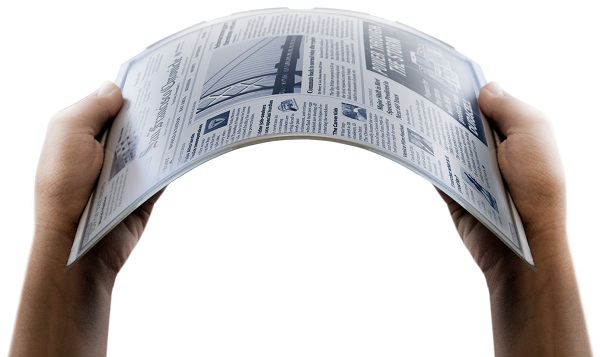It has become common wisdom in the tech world that old media represents an obsolete mode of thinking that should be discarded as quickly as possible.
The attitude to physical, broadcast or film media could generally be summed up by saying “Newspapers? Print books? Those things are ancient and of no use to anyone ever, amirite?”
But those with a little more patience and scope know that isn’t entirely true. Media is an enterprise that forms a core part of modern societies, and digital media is but a few years old. So maybe there are still some lessons that old media has to teach those young upstart digiphiles. Here are three important ones.
Old Forms of Media Don’t ‘Die’, They Simply Evolve
One of the most common approaches of tech nerds toward old media is that it will die. But history has shown that this is totally false. TV didn’t kill radio, radio didn’t kill the newspaper and so on.
But the lesson here is not just ‘be careful about how you express’ things; it’s that each form of media has its own function. Radio is good for listening while doing something else. TV is great for live coverage. Magazines are good for in depth reporting.
Now, the web offers a greater shift. Will the newspaper, the specialty of which was about daily news and weather etc., survive in its current form? No, probably not. The instantaneous updates on the web are a far better solution. But the brands, approach to journalism and emphasis on staying current and on top of things likely will because they fulfill a need in people’s lives.
That newspapers will continue in the same form seems doubtful. But we need to understand two things: a structure of media has its uses, such as the journalistic standards that started with newspapers; and that those structures can translate over to new forms, even if the form of delivery changes.
Design for the the Medium
[vimeo]http://vimeo.com/20777645[/vimeo]
If you take a look at some of really key websites online – say, Slate or Salon – and you’ll see they’re essentially designed like the front page of a newspaper: there are a whole mass of stories competing for your attention, not to mention a number of other sections of the site you can also click on. It’s messy, it’s disorganized, but most importantly, it’s totally at odds with what works best on a screen – a clean, uncluttered design that doesn’t send your attention spiraling off in a hundred directions.
Print understood that you have to design for not only the medium but how people use it. The newspaper – a big, multi-section, complex collection of stories – had many articles on its front page because you needed to know what was in it very quickly. It was also read multiple times over the day by multiple people, and had to adopt a one-size-fits-all strategy.
Similarly, magazines, with their longer stories, glossy paper and more sophisticated layouts are designed for slower, more leisurely reading and more in-depth reporting.
Now again, look at Slate and Salon. Do those strike you as sites that have designed for how people use them? Are they customizable? Do their ad-filled, cluttered designs lend themselves to reading 1- or 2000 word pieces? Are they crafted to make the best reading experience possible? Nope. Not even close.
Digital media must learn to create products for how people use them. Part of that is about visual design. But, like the clip above shows, it’s also about reconceptualizing the purpose and ethos of a magazine.
Charge What Seems Reasonable to People
Despite the fact that media industries like broadcast and print have struggled in the slow shift to digital, one thing they were previously good at was charging what the market was willing to bear. A newspaper was a buck, a magazine was four or five, and seeing a movie cost you under ten.
But if you look at it now, charging $20 for a digital movie you can only watch on one platform? That’s not good value at all. Charging $5 per issue of an iPad magazine that’s essentially just a PDF of the print version? It feels like a ripoff. Heck, given the plurality of music streaming options, sometimes even $10 for an album feels a bit steep.
What digital seems unwilling to learn is that people pay not for the ‘inherent’ value of content, but the value of a given thing in their lives. $10 for a DVD you can pass around to all your friends seems fair and reasonable. $8 a month for older films and TV shows on Netflix is totally fair. These are all based on how much value people ascribe to those activities in their day-to-day existence.
And that’s something most new media has yet to learn from old media – though you could say that old media has yet to learn that from itself. Because the buck you paid for a newspaper was about how that newspaper fit into your daily life and the ecosystem surrounding it.
What new media must learn from old media is that you only charge in part for content; what people are also paying for is convenience, the delivery form and the extras ‘on the side’ like classifieds, coupons etc.
Because It’s Old, Doesn’t Mean It’s Wrong
The idea that because an approach is bad because it comes from old media must be done away with. Print, broadcast, radio and film all have good ideas from the past on how to price, organize, present and distribute content. Yes, the web has fundamentally altered all of those aspects of the industry.
But that doesn’t mean there are no lessons to be learned. Charge for convenience as much as content; design for the medium; and recognize the individual uses and specialties of each form.
Are there any other lessons old media has to teach new media? Hit the comments and share your ideas.





GIPHY App Key not set. Please check settings
2 Comments